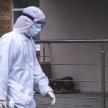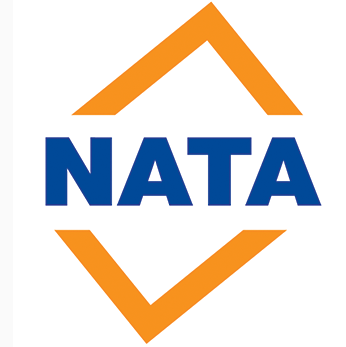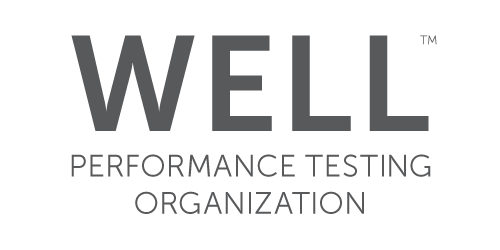
27th
Duty of Care in the Built Environment
Asbestos & Hazardous Materials | Indoor Air Quality | Mould | Water Quality | Slip Resistance Testing | Aluminium Composite Panel Sampling
By Joe Scholz, Director
Occupational Health and Safety Legislation in Australia burdens a Person Conducting Business or Undertaking (PCBU) with the primary duty of care to ensure a safe workplace at all times, including exposure to environmental contaminants.
A building is a workplace for its occupants, visitors and also for maintenance contractors.
Environmental testing is the best avenue, legally speaking, for Commercial Buildings of one form or another, to evidence that its PCBU has taken steps to make a workplace safe from environmental risks.
When managing a commercial building, the PCBU is almost always the Building Manager acting on behalf of the Building Owner.
When engaging a contractor or consultant to undertake environmental testing or inspections, two factors vastly improve the risk profile of a Building Manager and Building Owner;
- independent assurance of the contractor’s quality management system
- appropriate insurance cover held by the contractor.
This article explains what a Building Manager should look for in a testing contractor or consultant in relation to these two factors.
If you’d like more information about your duty of care, occupational health and safety legislation, or the specific regulations and guidelines covering environmental risks in the built environment please contact us.

Quality Assurance Testing, Assessment and Reporting
Quality assurance for environmental testing is essential for Building Managers and Owners to;
- Comply with legislation, standards, and Codes of Practice
- Provide a traceable record for the whole process of the Inspection, Sampling, Laboratory Testing, Result Analysis and Reporting
- Provide consistent results independent of the individual conducting the testing
- Provide reliable documentation for use in litigation mitigation
Quality Assurance in environmental testing is complex and not easily understood by Building Managers and Owners. Third party accreditation provides assurance the tester has been independently assessed for the inspection and assessment.

ISO 17020 (2012) is an International Standard that specifies Quality Assurance for inspection.
ISO 17025 (2017) is an International Standard that specifies Quality Assurance for laboratories.
NATA provides third party accreditation for compliance with ISO 17020 & 17025 in Australia. Companies may only be accredited for specific activities and environments. For example:
- sampling potable water for lead analysis in a commercial building,
- developing an Asbestos Register for a commercial building,
- assessing the indoor air quality in a commercial building,
As such, to provide independently verified quality assurance for environmental testing, a Building Manager should commission a company with NATA accreditation for the specific testing or inspection required. The whole process must be considered from end to end, as shown in the following infographic.
Quality Assurance Summary of the Environmental Testing Process
Common scams occur when firms promote themselves as NATA accredited for a test or inspection when they;
- only have their equipment calibrated by a NATA accredited supplier, or
- only send their samples to a NATA accredited laboratory, or
- do indeed have NATA accreditation, but it’s for a completely unrelated testing or inspection task.
How to assess NATA accreditation for an Environmental Testing Activity
- Check NATA website: https://www.nata.com.au/accredited-facility
- Search for the Business Name and review the accreditations
- ISO/IEC 17020 (2012) must be shown & the specific testing activity shown under
‘SERVICE’ ‘PRODUCT’ or ‘DETERMINANT’ columns

Litigation and Insurance
Thankfully litigation is not an everyday occurrence, but if it were to occur, shifting exposure from the Building’s insurance to the testing contractor’s insurance is the main downside protection for Building Owners and Building Managers.
Due to the varied nature of environmental testing, assessment and reporting, ensuring valid and appropriate insurance for the activities undertaken can be difficult. The two insurances of concern are:
1. Public and Products Liability
This insurance deals with personal injury or property damage that may be caused by the contractor or consultant conducting works onsite. Environmental testing activities are highly varied and thus the potential liability can only be insured if the testing activity is specifically covered, usually indicated by being listed on the insurance certificate of currency.
2. Professional Indemnity
This insurance deals with advice provided by the contractor or consultant which includes:
- Determining sampling locations
- Determining the scope of the tests (what to test for?)
- Assessing the results
- Reporting
- Recommendations
Even more importantly than above, environmental testing activities are highly varied and thus the professional indemnity is only available for the specific testing activities that the contractor of consultant has obtained cover for, usually indicated on the insurance certificate of currency.
NOTE: Cover for liabilities arising from asbestos is excluded from ALL professional indemnity insurance policies, UNLESS the policy includes a so called asbestos endorsement which negates aspects of the blanket exclusion so that the insured’s asbestos related activities are covered.
Categories
Recent Posts
Navigating the GRESB 2024 Updates: Key Changes and Implications
26th Nov
GRESB’s 2024 Real Estate Assessment introduced significant changes, refining how ESG performance is measured and reported. These updates a...
Trichloramine and Indoor Air Quality in Swimming Pools
05th Nov
For swimmers and pool workers alike, the characteristic "chlorine smell" at indoor swimming pools is part of the experience. Howev...
Indoor Air Quality Takes Centre Stage: A New Government Report on Airborne Virus Transmission
30th Sep
The importance of Indoor Air Quality (IAQ) has gained significant attention following the release of a groundbreaking report from Australia�...

















